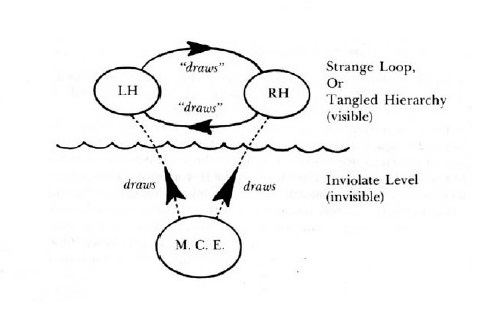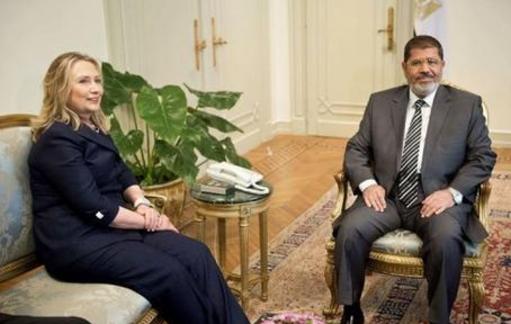Takfir squared, Prisoners Dilemma and MC Escher
Friday, January 16th, 2015[ by Charles Cameron — call it backlash, backfire, or blowback, somewhere they’re dclaring takfir on the takfiris ]
.
Ali Minai at BrownPundits has a worthwhile take on what he calls, paradoxically enough, Unreal Islam, from which I’ve excerpted this paragraph:
However, another version of takfir is now afoot in the world. Call it “reverse takfir”. Unlike the militant version, it is well-intentioned and self-consciously humane, but it is also dangerous. This “benign” version of takfir is epitomized by the idea that the acts of violence being committed by self-proclaimed holier-than-thou Muslims are not the acts of “real Muslims” and do not represent “real Islam”. In effect, it declares the terrorists to be infidels! The idea is widespread, and is espoused in three different contexts: By well-meaning non-Muslims (such as Presidents Bush and Obama) seeking to avoid stereotyping and the implication of collective guilt; by ordinary Muslims wishing to dissociate themselves from the beheaders; by Muslim sectarians wishing to separate their brand of orthodoxy from that espoused by terrorists; and – most ironically – by Muslim governments and security forces seeking an “Islamic” justification for attacking extremist fellow Muslims, thus implicitly buying into the central jihadi argument of apostasy as a capital offense. The urge to do this reverse takfir is understandable and not without factual basis: Most Muslims are indeed not violent extremists who wish to kill infidels. And it does help protect innocent Muslims from backlash, which is rather important. The problem, however, is that it also feeds the narrative of denial and deniability that allows the militancy to thrive.
**
Call it reversal, call it backlash, backfire, blowback, call it enantriodromia, eye-for-an-eye, tit-for-tat — the return of violence for violence seems both instinctual, in the sense that a desire for vengeance seems to spring unprompted in the individual, and culturally embedded, in that it can be found in Torah and Pashtunwali alike, and elsewhere, and elsewhere.
Whether the individual instinct can usefully be separated from cultural instinct is at least a question, perhaps a koan — but it was Axelrod‘s insight, working on the Prisoners Dilemma in game theory, that the “strategy” of tit-for-tat may best be considered as an iterative process, .. for-tit-for-tat-for-tit-for-tat-for .. rather than as an isolated instance, tit-for-tat-period.
Gandhi made the same leap to iterative thinking when he said:
An eye for an eye makes the whole world blind
— or did he?
**
Iteration requires that we pull back, to see not just “my / our” response — which is probably self-evident, if not so all-consuming as to be omnipresent and invisible — but to see “both sides”.
We move from:
— which is the natural or “default” view, equivalent to the righteous indignation of one’s own side in a conflict, to:
— which definitely seems paradoxical on the face of it, and which notably doesn’t give preference to one side or one hand over the other — Doug Hofstadter‘s celebrated diagram illustrates the process thus:
**
Lincoln uses this strategy in his Second Inaugural, in describing the Civil War:
Each looked for an easier triumph, and a result less fundamental and astounding. Both read the same Bible and pray to the same God, and each invokes His aid against the other. It may seem strange that any men should dare to ask a just God’s assistance in wringing their bread from the sweat of other men’s faces, but let us judge not, that we be not judged. The prayers of both could not be answered. That of neither has been answered fully.
It is to a large extent the elevation of Lincoln’s comments above partisanship into inclusivity, surely, which gives that great speech its greatness.
**
For your further consideration:
Robert Axelrod:
The Evolution of Cooperation, 1984 The Complexity of Cooperation, 1997 The Evolution of Cooperation, revised 2006
Doris Schattschneider:
M.C. Escher: Visions of Symmetry








